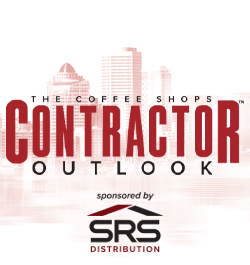UP TO THE MINUTE
Staying ahead of project risk in roofing
November 27, 2025 at 6:00 a.m.By Cotney Consulting Group.
When you treat risk management like a habit instead of a special event, you become more resilient.
Every roofing project carries a degree of uncertainty, no matter how experienced the contractor or how well-worn the scope of work. Sometimes that uncertainty shows up as weather delays, other times as change orders, labor shortages or priace increases. What separates the contractors who survive from those who thrive is not luck, but how they prepare for and manage risk from day one.
Risk management in roofing is not a buzzword. It is a practical, profit-saving mindset. If you are running crews, managing multiple jobs and trying to keep a tight grip on cash flow, then managing risk must be baked into your daily operations. Roofing contractors too often associate risk with large, complex projects. But in reality, risk management applies just as much to a small residential reroof as to a multimillion-dollar school or hospital roof. How well you identify, plan for and mitigate those risks is the difference.
The first step is understanding what we mean by risk. In roofing, project risks can come from your business model, installation plan, jobsite safety, financial decisions or even your relationship with suppliers and subs. If it can impact your ability to deliver the project on time, within budget and to spec, it’s a risk.
At the business level, risk manifests as taking on work outside one's comfort zone, overstretching crews or overcommitting financial resources. At the project level, it can be as simple as underestimating labor, assuming a material lead time that turns out to be wrong or misreading a spec detail. At the financial level, risk concerns cash flow, draw schedules, retainage and scope creep.
Reducing these threats is not guesswork. It starts with a structured approach to identifying and categorizing risks before the first crew steps on the roof. This means reviewing the project documents with a sharp eye, holding internal planning meetings and capturing input from your field leadership. You do not need a formal “risk register” like large general contractors, but a clear, written understanding of what could go wrong and what you will do if it does.
Every job should start with a risk review. That includes estimating pitfalls and operational considerations like roof access, staging space, material delivery timing, code issues and even tenant coordination. Suppose your estimator or project manager sees potential schedule pressure or the crew has never worked with a particular material. In that case, those risks must be logged and addressed in pre-construction meetings.
Once risks are identified, they need to be ranked by priority. Not all risks carry the same weight. You can live with some delays, but you cannot live with the wrong system being installed because a detail was missed. A good rule of thumb is to ask two questions: What is the likelihood this could happen and what is the impact if it does? The answers help you determine what needs proactive planning versus what needs monitoring.
From there, assign responsibility. One of roofing contractors' most significant mistakes is leaving risk management as “everyone’s job.” In practice, that means it becomes no one’s priority. Define ownership clearly. If a particular risk is tied to submittals, procurement or coordination with other trades, assign a team member to own it. You will reduce confusion and increase accountability.
Another core part of risk management is watching how conditions change during the project. A good plan is not static. Weather can shift, crews can get pulled or material deliveries can slip. A change on one project might create a ripple effect across your schedule and labor pool. That is why weekly project reviews should include a quick revisit of your risk list. Has anything changed? Is anything new emerging? Are we seeing early signs of trouble that can still be corrected?
One area often overlooked is opportunity. Risk management is not just about what can go wrong. It also involves identifying areas where you can gain an edge. Maybe you can accelerate a portion of the work and reduce overhead. Perhaps a material substitution will still meet spec but save time or money. These wins only come if your team actively manages the job with a mindset of protection and opportunity.
Communication is the glue that holds risk management together. Field leaders need to be comfortable raising concerns. Office staff must have access to the latest project information. And ownership must be willing to ask hard questions before issues become disasters. If your team feels heard and supported when they flag potential problems, you will spot risks sooner and solve them faster.
Technology also helps keep risk visible across the company. Whether through job costing software, project dashboards or even simple shared spreadsheets, make sure the right information is flowing to the right people to avoid blind spots.
Finally, risk management should not be something you only talk about when things go wrong. Build it into your project playbook. Make it a standard part of your estimating process, your kickoff meetings, your progress reviews and your project closeouts. When you treat it like a habit instead of a special event, your team becomes better at it and your business becomes more resilient.
The roofing industry is not getting simpler. Between supply chain swings, shifting building codes, labor pressures and ever-rising customer expectations, contractors have more to juggle than ever before. Risk is part of the game, but with the proper process, it does not have to be a losing one. Roofing contractors who take risk management seriously avoid problems and build stronger businesses, one well-planned project at a time.
Learn more about Cotney Consulting Group in their Coffee Shop Directory or visit www.cotneyconsulting.com.






















Comments
Leave a Reply
Have an account? Login to leave a comment!
Sign In